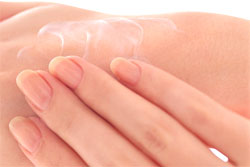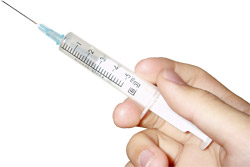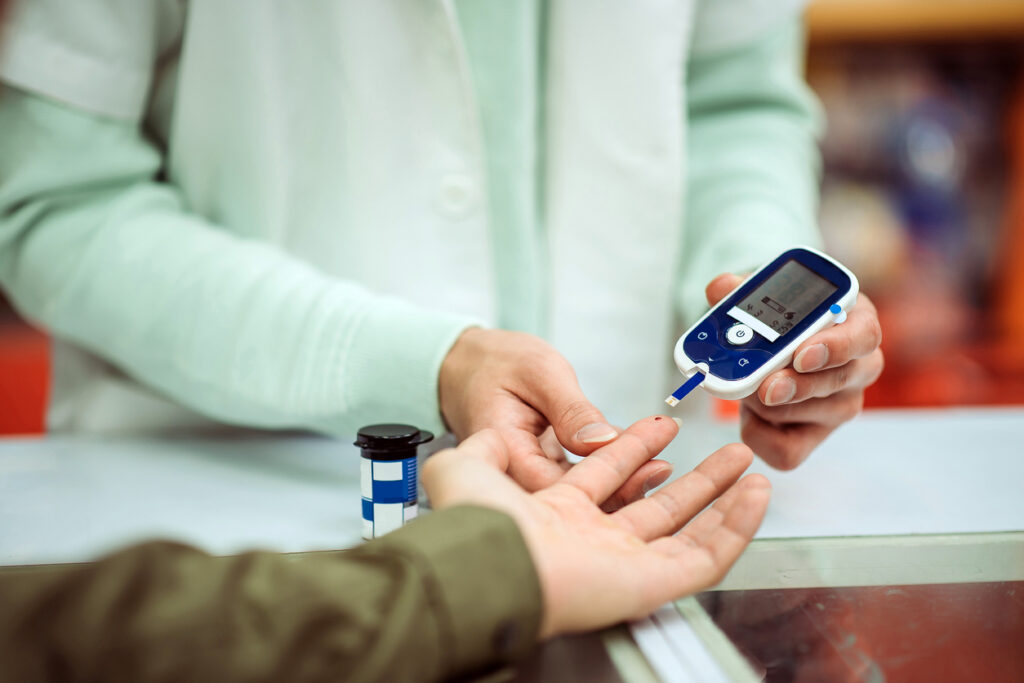Can I prevent scars occurring?
Unfortunately, no particular treatment has proven to be effective in preventing scar formation. There are several treatments that are marketed for use on minor wounds to prevent scarring, such as vitamin E creams, and silicone gel sheeting, but studies have not shown them to be consistently effective.
A wide range of treatments options are available in order to improve the appearance of scars. Some are more effective than others and some are only appropriate for certain types of scars. These treatments are discussed within the following categories:
- Topical (applied to the skin) treatments;
- Injections;
- Procedures; and
- Minor surgery.
Topical treatments

Hyperpigmentation refers to dark patches on the skin that occur following healing of a wound. These patches will become darker with sun exposure. Sun protection (hat, clothing, shade, broad-spectrum oil-free sunscreen) will minimise this effect, and protect vulnerable new skin from harmful UV radiation. Avoiding the UV radiation associated with solariums or ‘sunbeds’ is also important.
Well applied makeup can often be used to cover up scars, and following consultation with a doctor, may be appropriate to use at the same time as scar treatment.
Corticosteroids are hormones produced within the body that have a number of effects, including significantly reducing inflammation. Corticosteroids may be produced as a drug, and are available in a range of strengths, and different topical preparations (creams, lotions or ointments). Corticosteroids reduce scarring though decreasing inflammation, increasing the breakdown of the collagen (the main protein that forms scars), and decreasing the production of collagen. Negative effects of steroid use include skin thinning, hypopigmentation (pale areas), and delayed wound healing.
Silicone gel sheeting/dressings (hydrocolloid dressings)
Silicone gel dressings are used to reduce scar thickness, reduce pain, and to prevent hypertrophic or keloid scars. The gel is usually on self adhesive sheeting (sticks to the skin) and must be used regularly. It is unclear exactly how it works, but the sheeting increases the amount of moisture (hydration) of the wound, which helps it heal. Studies designed to assess how effective silicone dressing are at reducing scarring are not of good quality, so their usefulness in treating hypertrophic or keloid scars, or preventing them from forming is unclear. Despite this, silicone gel dressings are a popular treatment for scars as they are non-invasive and have minimal side effects.
Azelaic acid is an acid that is naturally produced by certain yeasts, barley, rye and wheat. It is applied to the skin as a cream in order to treat post-acne hyperpigmentation and to improve mild to moderate acne. It is used to treat acne as it has antibacterial and antiinflammatory effects. It reduces scarring because it helps dissolve keratin, which is one of the proteins in the skin and also reduces pigmentation of the skin. The main possible side effect is irritant dermatitis (redness, itching, scaling).
Hydroquinone is a skin bleaching agent that blocks an enzyme (tyrosinase) that is involved in tanning (the production of melanin in the skin). Hydroquinone may be used in combination with a retinoid (tretinoin) for the treatment of post acne hyperpigmentation scarring. Side effects are rare.
The application of pressure over existing scars, or following the removal (excision) of keloid scars, has been shown to have a flattening effect, and to prevent the occurrence or recurrence of certain scars. The pressure appliance is most effective if worn for 18-24 hours a day for at least 4-6 months. It tends to be used in combination with other treatments. Several studies have concluded that evidence of the effectiveness of pressure therapy for scar treatment is limited. The usefulness of pressure therapy is limited when scars are in areas that are not flat, and the device may be uncomfortable or cause ulceration (breakdown of the skin).
Many other topical therapies have been proposed to have a role in minimising scarring. Examples include vitamin A, vitamin E, vitamin C, zinc, colchicine, hyaluronidase, cyclosporine, honey, onion extract, 5-fluorouracil, bleomycin, retinoids, verapamil, hydrochloric acid and formalin. The evidence for the use of these therapies is limited.
Injections

Various substances (fillers), such as collagen, fat implants and gelatin matrix, may be injected in order to raise soft indented scars, such as atrophic acne scars. When collagen is used, improvement in appearance occurs immediately, but the results are not permanent, so injections are often repeated. The results when Hyaluronic acid is used usually last longer. Fat, from the patient, may be used to improve the appearance of full, deep, thickened, depressed scars. Potential side effects associated with soft tissue augmentation include pain, bruising, infection, allergic reaction, hypertrophic or keloid scarring, migration of product, ulceration, and pigmentary changes (darkening or lightening of the skin).
Interferon alpha is a protein that is produced by the body’s immune system. It has many uses in the body and as a medicine. It is used in scar treatment as it reduces the production of collagen that forms scar tissue. This softens and improves the appearance of scars. Side effects include flu-like symptoms, headache, fever and muscle pain.
Injection of the drug fluorouracil into scars is used for the treatment of hypertrophic and keloid scarring. It is most useful in combination with other therapies, such as steroid injections into the scar, rather than on its own. It is thought to minimise scars by reducing the cells that produce the collagen that forms scar tissue. Side effects include pain at the injection site and short term Hyperpigmentation (skin darkening), and less commonly a short term burning sensation.
Bleomycin is an antibiotic with anti-tumour, antibacterial and antiviral activity. When injected into the skin, it may result in significant improvement in keloid and hypertrophic scars. However, darkening of the surrounding skin is a common side effect (about 75% of people) and there is skin thinning in 10-30% of people.
Procedures
This procedure involves the application of a chemical to the skin surface, which removes the top layer of skin. Blistering of this top layer enables normal skin to grow back. The chemical is applied with a cotton tip or gauze, with different chemicals used for different depth peels. This gives the skin a more even colour and smooths its surface. Chemical peels are most effective for treating shallow, superficial, depressed scarring. Unless a very deep peel is used, this technique is only useful for mild or superficial scarring. Light peels do not require any healing time, while deep peels may require up to two weeks in order to heal.
Laser (high energy light) resurfacing involves the use of a laser to remove or remodel damaged skin. This may be helpful for reducing bulky scars, though indented atrophic scars can also be improved with laser resurfacing. Another positive effect of laser on scar tissue is to reduce itching and burning sensations. The laser produces heat which damages the blood supply to the scar tissue, with reduced production of the collagen that forms the scar. The side effect profile of laser therapy is good compared with other treatments, with the main effect being redness after the treatment, which resolves in 7 to 10 days. Skin may stay pink for several weeks or months after treatment.
Different types of laser methods are available, including carbon dioxide lasers and pulsed dye lasers. Rather than causing redness as a side effect, pulsed dye lasers use yellow light primarily to reduce redness, but also to reduce bulk and improve scar texture.
More information on laser therapy for the skin
Dermabrasion/microdermabrasion
Dermabrasion and microdermabrasion involve the pressurised application of crystals (e.g. aluminium oxide) which are then removed by vacuum removal system, or crystal-free diamond-tipped abrasive devices to remove the top layers of skin. Side effects include bruising, photosensitivity (sensitivity to sunlight), and temporary burning, stinging or pain.
Dermabrasion is used to treat acne scars, pockmarks, some surgical scars and minor skin irregularities. It is most effective for the treatment of fine wrinkles and post inflammatory hyperpigmentation. Dermabrasion improves the contour and appearance of the skin, but does not remove the scar entirely. Several sessions may be required to achieve the optimal cosmetic result. Dermabrasion may be superficial, or deep. Deeper dermabrasion should always be carried out by dermatologists, or other specialised doctors.
Radiation has been used for over a century in order to treat keloid scarring, with varying success rates. Its mechanism of action is through reduction of the collagen that forms scar tissue. Cure rates have been reported as between 15%-94% when radiotherapy is used on its own. Surgical incision in combination with radiotherapy has been reported as the most effective treatment for severe keloid scarring. The main side effects of radiation therapy are hypo- and hyperpigmentation, redness and skin thinning. Radiation induced cancer due to scar treatment is extremely rare.
Cryotherapy or cryosurgery involves freezing the upper skin layers. The frozen skin then blisters and excess tissue within the scar is thus removed. Cryotherapy is often used in combination with surgical excision. The main side effects are formation of atrophic depressed scars and residual hypopigmentation. Evidence for the long term efficacy of cryotherapy for scar reduction is limited.
Minor surgery

Surgical excision or revision is performed by dermatologists or plastic surgeons in order to remove or alter a scar and rejoin the skin in a less obvious fashion. It is usually carried out for wide or long scars, or those in prominent places. Wide scars may be cut out and rejoined, so the healing edges of the new scar are thinner. Staggered incision lines may replace a long scar, forming a less obvious scar. The direction of the scar can be altered to fall in with a natural line such as a wrinkle, or the whole scar may be moved to a junction such as a neck crease. Excision alone is not a particularly effective treatment for keloids, as they grow back in between 45-93% of cases. The main side effects related to surgery for scars are infection or lack of wound healing.
Subcision® is a surgical technique involving division of the fibrous bands under the scar, which allows the skin to return to a more normal position. Bleeding under the scar prevents the surface becoming ‘stuck down’ again, and new connective tissue is formed under the skin surface. This technique is particularly useful for depressed acne scars. Usual side effects are bruising and swelling, lasting 1-2 weeks.
References
- O’Brien L, Pandit A. Silicon gel sheeting for preventing and treating hypertrophic and keloid scars. Cochrane Database Syst Rev. 2006;(1):CD003826.
- Atkinson JA, McKenna KT, Barnett AG, et al. A randomized, controlled trial to determine the efficacy of paper tape in preventing hypertrophic scar formation in surgical incisions that traverse Langer’s skin tension lines. Plast Reconstr Surg. 2005;116(6):1648-56.
- Mustoe TA. Evolution of silicone therapy and mechanism of action in scar management. Aesthetic Plast Surg. 2008;32(1):82-92.
- Baumann LS, Spencer J. The effects of topical vitamin E on the cosmetic appearance of scars. Dermatol Surg. 1999;25(4):311-5.
- Khoosal D, Goldman RD. Vitamin E for treating children’s scars. Does it help reduce scarring? Can Fam Physician. 2006;52:855-6.
- Reish RG, Eriksson E. Scar treatments: Preclinical and clinical studies. J Am Coll Surg. 2008;206(4):719-30.
- Oakley A. Acne scarring [online]. New Zealand Dermatological Society Incorporated; 2008 [cited 28 March 2009]. Available from URL: http://www.dermnetnz.org/acne/acne-scarring.html
- What is a scar [online]. American Academy of Dermatology; 2004 [cited 28 March 2009] Available from URL: http://www.aad.org/public/publications/pamphlets/cosmetic_scar.html
- Rivera AE. Acne scarring: A review and current treatment modalities. J Am Acad Dermatol. 2008;59(4):659-76.
- Broughton G 2nd, Janis JE, Attinger CE. Wound healing: An overview. Plast Reconstr Surg. 2006;117(7 Suppl):1-32e-S.
- Reish RG, Eriksson E. Scars: A review of emerging and currently available therapies. Plast Reconstr Surg. 2008;122(4):1068-78.
- Niessen FB, Spauwen PH, Robinson PH, et al. The use of silicone occlusive sheeting (Sil-K) and silicone occlusive gel (Epiderm) in the prevention of hypertrophic scar formation. Plast Reconstr Surg. 1998;102(6):1962-72.
- Goodman GJ, Baron JA. The management of postacne scarring. Dermatol Surg. 2007;33(10):1175-88.
All content and media on the HealthEngine Blog is created and published online for informational purposes only. It is not intended to be a substitute for professional medical advice and should not be relied on as health or personal advice. Always seek the guidance of your doctor or other qualified health professional with any questions you may have regarding your health or a medical condition. Never disregard the advice of a medical professional, or delay in seeking it because of something you have read on this Website. If you think you may have a medical emergency, call your doctor, go to the nearest hospital emergency department, or call the emergency services immediately.








